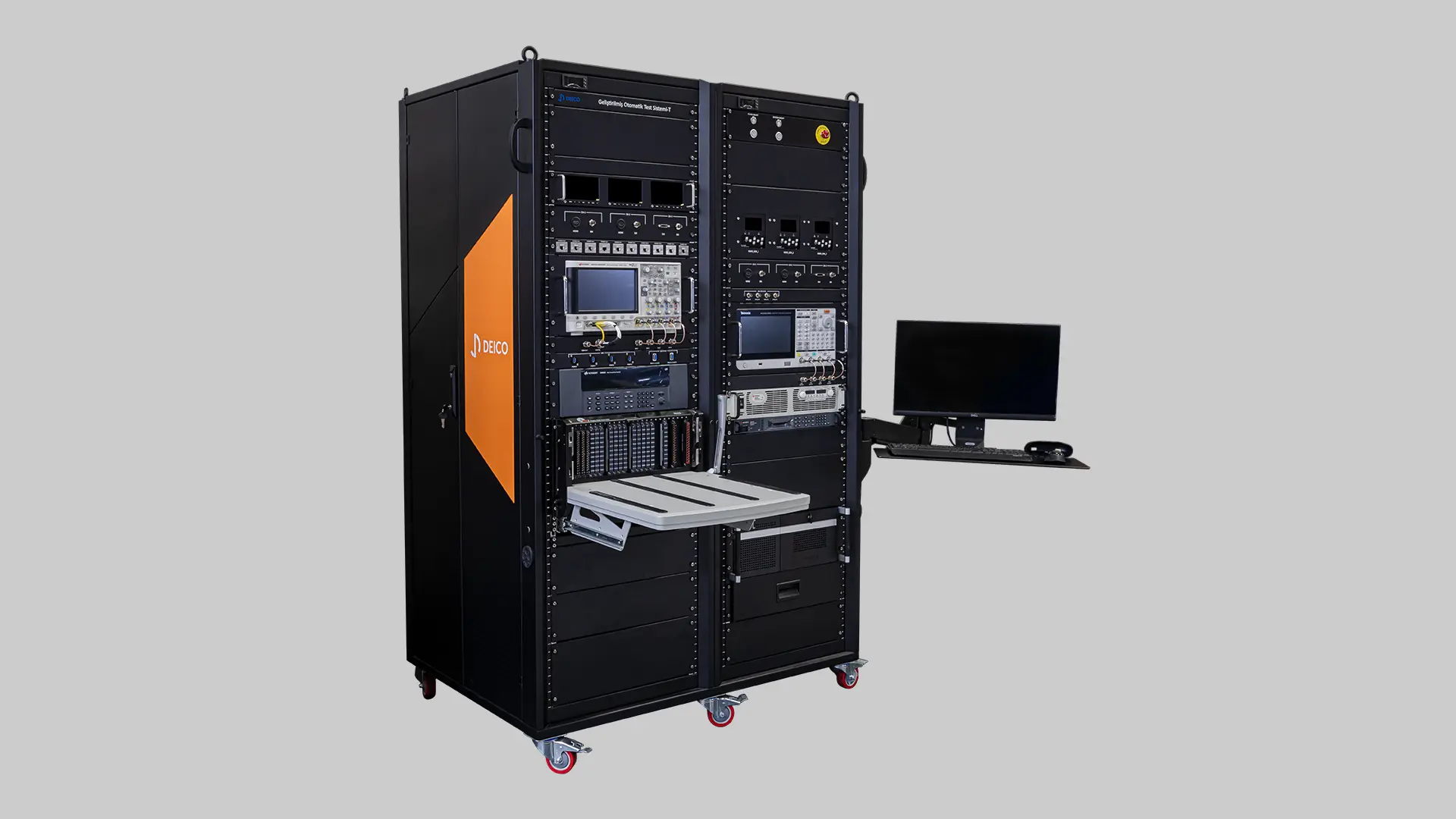Project Overview
Project Objective
The objective of the project is to develop a Gelişmiş Otomatik Test Sistemi (GOTS) — an Advanced Automated Test System — designed specifically for use in military and aerospace environments. This system aims to provide a fully automated, reliable, and modular platform capable of performing comprehensive testing at both LRU (Line Replaceable Unit) and SRU (Shop Replaceable Unit) levels.
Target Platform and Industry
-
Military Aircraft Systems (Avionics, Radar, Communication Units)
- Unmanned Aerial Vehicles (UAVs)
- Missile and guidance systems
- Ground-based defense systems
- Naval platforms and subsystems
- Defense industry production facilities
- Aerospace component manufacturing and testing centers
- Maintenance, Repair, and Overhaul (MRO) Facilities
- Electronic Warfare (EW) Systems Integration Labs
- Automated test and diagnostics laboratories
Scope and Functionality
This project focuses on the design, development, and implementation of an Advanced Automated Test Station (GOTS) that enables comprehensive testing of electronic units and subsystems, particularly for military and aerospace platforms.
Capabilities include:
- Executing functional, diagnostic, and performance tests on LRU and SRU components.
- Supporting production testing, verification, and validation.
- Performing automated fault detection and isolation.
- Generating detailed test reports and traceability logs.
- Integrating both hardware (test instruments, signal conditioning units, interface fixtures) and software (test control apps, drivers, scripts).
- Reducing manual intervention, improving test accuracy, and shortening test cycles through intelligent sequencing.

Technical Specifications
System Capabilities
-
Electrical fault injection on any I/O channel to validate safety responses
- Simulation and monitoring of avionics buses: MIL-STD-1553B, ARINC429
- RS-422 and RS-485 serial interface simulation
- Analog, discrete I/O, and serial signal simulation and measurement with timing and level control
- Ethernet avionics network interfacing with traffic monitoring and performance verification
- Video generation/analysis tools (DisplayPort, HDMI, S-Video, etc.)
- Signal conditioning tailored to platform-specific characteristics
- Mass interconnect interface for fast and repeatable UUT connections
- GUI for test automation, monitoring, and analysis
Standards, Protocols, and Compatibility
-
Ethernet controlled modular architecture
- PXI modular architecture
- MIL-STD-1553 support
- ARINC 429 simulation
- RS-232/422/485 communication
- Ethernet-based protocols
- Video interface compatibility
DEICO Modules Used
-
Ethernet controlled modules: DE2001, DE2101, DE2102
- MIL-STD-1553 bus coupler: DE8208
Project Value and Impact
The development of GOTS is critical in defense and aerospace contexts, where test repeatability, reliability, and traceability are mission-critical.
Why This Project Matters
- Increased Reliability: Detects system-level defects before deployment
- Time Efficiency: Shorter test cycles, reduced human error
- Cost Reduction: Pinpoint fault isolation reduces part replacement and repair times
- Lifecycle Support: Applicable from production to maintenance phases
- Scalability: Modular architecture supports future upgrades
- Compliance: MIL-STD conformance and automated report generation
Customer and Industry Benefits
Customer Gains:
- Reduced test durations
- Increased fault detection precision
- Lower repair and maintenance costs
- Intuitive interface requiring minimal operator training
- Unified and standardized test processes
- Automated reporting for traceability and audits
- Reduced Mean Time to Repair (MTTR)
Industry-Wide Contributions:
- Localization of ATE technology
- Strategic support for national defense programs
- Digitization of test workflows
- Modular systems enabling platform-wide scalability
- Knowledge transfer and local engineering capability
- Contribution to sectoral test standardization
- Export potential to allied defense partners
